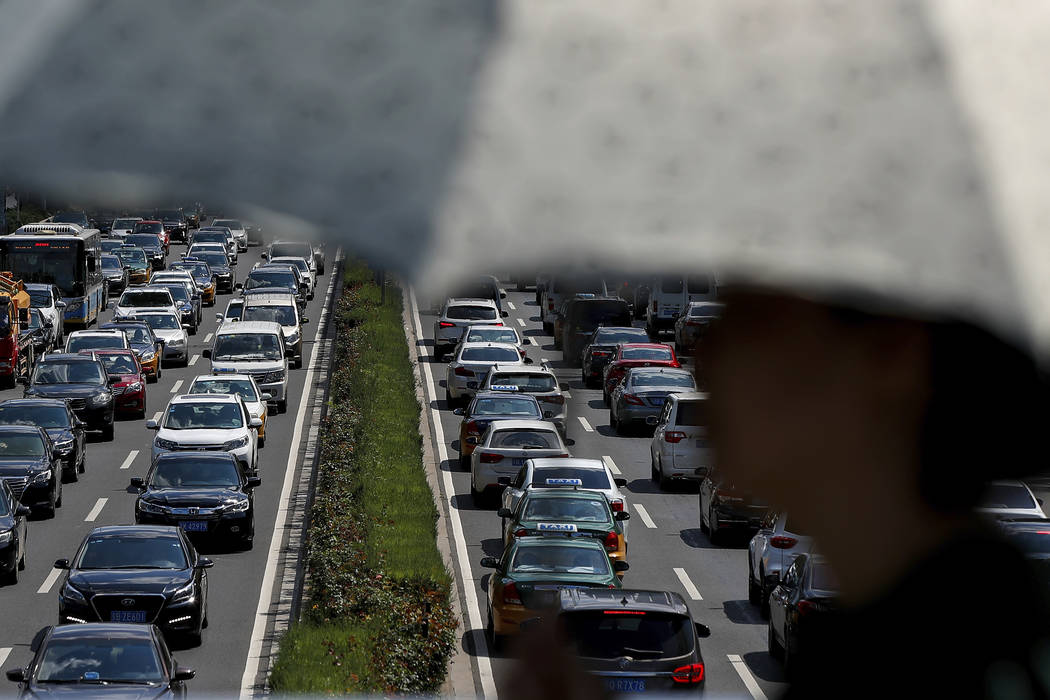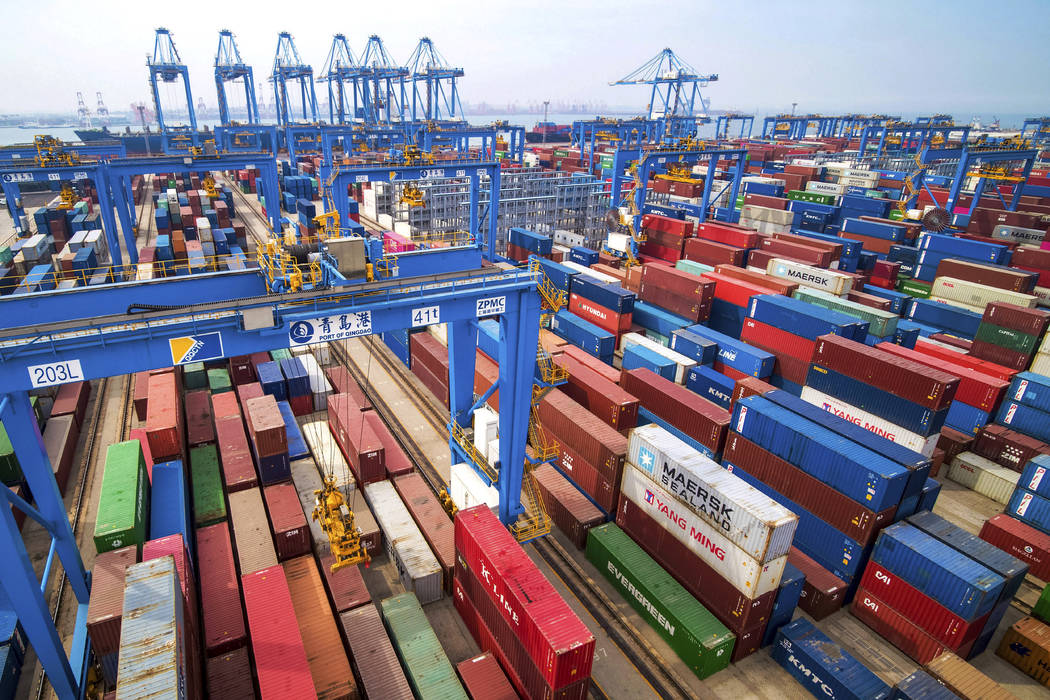China’s growth hits 26-year low, slowing global economy
BEIJING — China’s economic growth sank to a 26-year low in the latest quarter amid pressure from a trade war with Washington, adding to a deepening slump that is weighing on global growth.
The world’s second-largest economy expanded by 6 percent in the three months ending in September, down from the previous quarter’s 6.2 percent, data showed Friday. It was the weakest growth since China started reporting data by quarters in 1993.
The slump adds to problems faced by Chinese leaders, including rising inflation and weaker consumer demand, as they fight a tariff war with President Donald Trump over Beijing’s trade surplus and technology ambitions.
“Pressure on economic activity should intensify in the coming months,” said Julian Evans-Pritchard of Capital Economics in a report.
Markets fall
Asian stock markets declined on the news. China’s benchmark Shanghai Composite Index lost 0.6% and Hong Kong’s Hang Seng shed 0.2%.
The unexpectedly weak data raise the likelihood of interest rate cuts and other stimulus to shore up growth and avert politically dangerous job losses. Chinese leaders have boosted government spending but avoided a large-scale stimulus until now for fear of reigniting a rise in debt that already is so high that rating agencies cut Beijing’s credit rating.
“More aggressive stimulus can be expected,” said Bill Adams of PNC Financial Services Group in a report.
The slowdown in China, the world’s biggest trader, has global repercussions. It is depressing demand for industrial components from Asian countries. Prices of soybeans, iron ore and other commodities have fallen, hitting Brazil, Australia and other suppliers.
Pig disease spikes prices
Consumer prices have spiked due to a disease outbreak in China’s vast pig herds that is disrupting pork supplies.
The International Monetary Fund cited the U.S.-Chinese tariff war in this week’s decision to cut its 2019 global economic growth forecast to 3% from 3.2%.
Trump agreed last week to delay a tariff hike on Chinese goods and said Beijing promised to buy up to $50 billion of American farm goods. Officials say the two sides still are working out details.
Beijing has yet to confirm the scale of possible purchases. It is unclear whether Chinese leaders want more steps including lifting punitive tariffs already in place before purchases go ahead.
Beijing is resisting U.S. pressure to roll back plans for government-led creation of Chinese global competitors in robotics and other technology. Washington, Europe, Japan and other trading partners say those violate Beijing’s market-opening commitments and are based on stealing or pressuring companies to hand over technology.
Retail, car sales dip
A bigger impact on Chinese growth appears to come from cooling domestic activity including consumer spending and investment.
Retail sales growth declined to 8.2% over a year earlier in the first three quarters of 2019, down from the first half’s 8.4%, the National Bureau of Statistics reported.
Auto sales in China, the global industry’s biggest market, are off 11.7% for the first nine months of the year.
That is a setback for a marathon official campaign to nurture growth based on domestic consumption and reduce reliance on trade and investment. Those plans call for maintaining exports that support millions of jobs.
Factory output growth slowed to 5.6% in the January-September period, down from 6% in the first six months of the year.
Growth in investment in factories, real estate and other fixed assets slowed to 5.4% for the first three quarters of 2019 from 5.5% in the first eight months of the year.
Investment “is being held back by trade war uncertainties,” said Adams of PNC.
Exports to US drop 21.9%
China’s exports to the United States, its biggest foreign market, fell 21.9% in September from a year ago. That helped to drag down overall Chinese exports by 1.4%. Imports of American goods sank 15.7%.
Beijing is struggling to cool consumer inflation that has spiked due to an outbreak of African swine fever that has disrupted supplies of pork, China’s staple meat.
Consumer prices rose 3% in September, the ruling Communist Party’s official target for the year, as pork prices soared 69.3% over a year earlier.
African swine fever has killed or prompted authorities to destroy millions of pigs. Beijing has increased imports, released pork from stockpiles and promised aid to farmers. But researchers say shortages are likely to last through next year while farmer rebuild their herds.


















